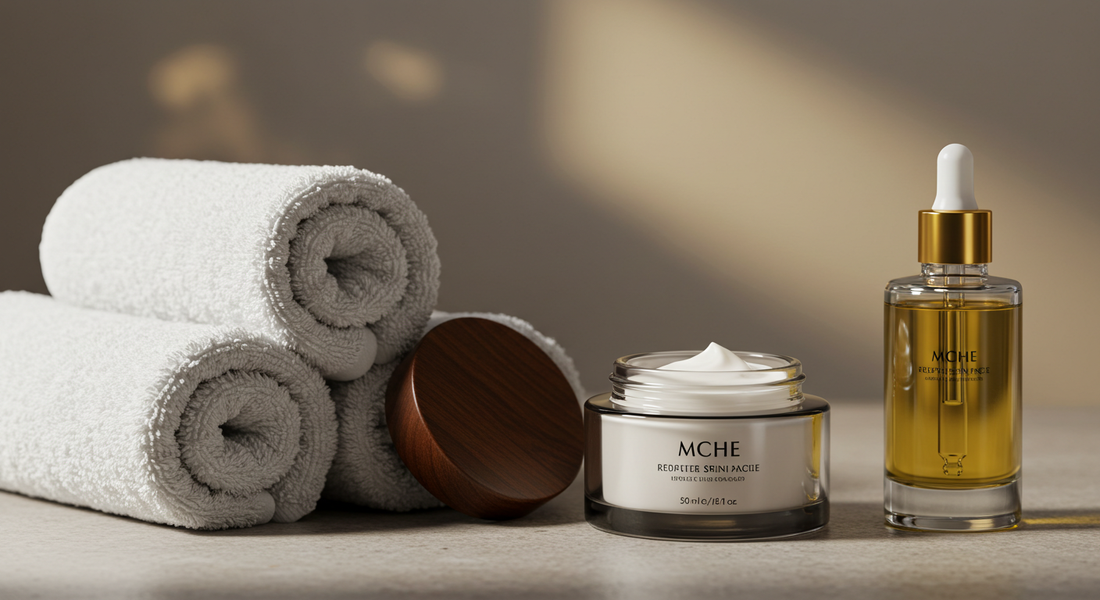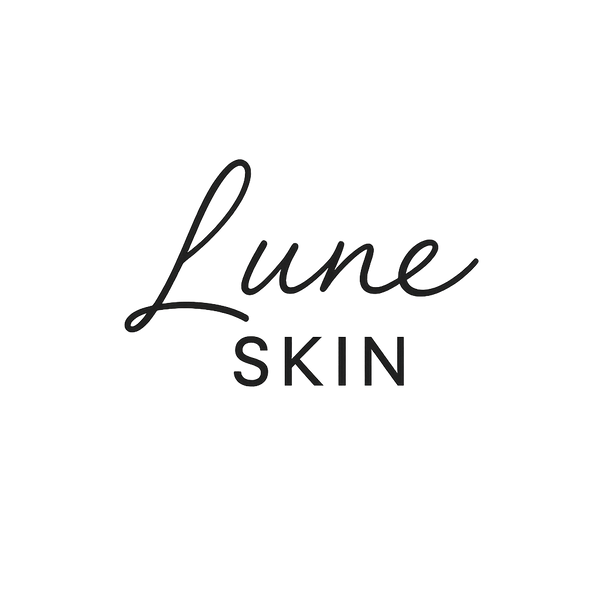
Barrier Repair 101: How to Restore Damaged Skin with Simple Ingredients
Share
Introduction
Your skin is your body’s largest organ—and its first line of defense. When the skin barrier is functioning properly, it keeps moisture in and harmful irritants out. But stress, environmental factors, over-exfoliation, or the wrong products can leave this protective shield compromised. The result? Redness, dryness, tightness, sensitivity, and even breakouts.
In this guide from Lune Skin, we’ll explore how to recognize a damaged barrier and—more importantly—how to repair it using gentle, effective, and minimalist ingredients that actually work.
What Is the Skin Barrier?
The skin barrier, also known as the stratum corneum, is the outermost layer of your skin. It’s composed of skin cells (corneocytes) and lipids that act like mortar to keep the structure intact. A healthy barrier holds moisture, blocks out toxins and bacteria, and maintains smooth, plump skin.
When this barrier is compromised, the skin’s ability to protect and renew itself declines—leading to visible damage and long-term skin issues.
Signs Your Skin Barrier Is Damaged
Recognizing the signs early can prevent further harm. Common symptoms include:
-
Persistent dryness and flakiness
-
Redness and irritation
-
Tight, uncomfortable sensation
-
Sensitivity to products that normally don’t cause issues
-
Sudden breakouts or rough texture
-
Increased oiliness (skin trying to compensate for moisture loss)
These signs may occur individually or together, depending on the severity of the damage.
Common Causes of Barrier Damage
A weakened skin barrier can be caused by:
- Overuse of harsh exfoliants (physical or chemical)
- Stripping cleansers with high pH or sulfates
- Environmental stress like wind, cold, or pollution
- UV exposure without proper SPF protection
- Using too many actives at once (like retinoids, acids, or vitamin C)
- Poor diet, lack of hydration, or stress
Understanding what’s disrupting your skin helps you make smarter choices moving forward.
The Skin Barrier Recovery Philosophy: Less is More
When your barrier is compromised, less is more. Focus on gentle, nourishing care with barrier-repairing ingredients and avoid introducing new actives until your skin stabilizes.
This means pausing strong treatments and returning to the basics: cleanse, hydrate, protect.
Key Ingredients for Barrier Repair
Here are five gentle powerhouse ingredients that help restore the skin’s barrier naturally and effectively:
-
Ceramides
These lipid molecules are naturally found in your skin and are crucial for barrier function. Applying ceramide-rich products helps replenish lost lipids, improving moisture retention and reducing irritation. -
Panthenol (Pro-Vitamin B5)
Panthenol hydrates, soothes, and supports healing. It works as a humectant, drawing moisture into the skin while calming redness and discomfort. -
Squalane
A lightweight, non-comedogenic oil that mimics the skin’s natural sebum. It moisturizes deeply without clogging pores, making it ideal for sensitive or inflamed skin. -
Niacinamide (Vitamin B3)
In lower concentrations (2–5%), niacinamide strengthens the skin barrier, reduces inflammation, and regulates oil production. It’s a versatile ingredient safe for most skin types. -
Hyaluronic Acid
While not a direct barrier repair ingredient, it supports hydration by attracting water molecules into the skin. Proper hydration is essential for barrier recovery.
How to Build a Barrier-Repairing Routine
Here’s a simplified day-and-night routine focused on restoring your skin’s strength and calm:
Morning Routine
- Gentle Cleanser: Use a sulfate-free cleanser with a low pH to avoid stripping the skin.
- Hydrating Toner or Mist (optional): Look for one with panthenol or glycerin.
- Barrier-Strengthening Serum: A formula with ceramides or niacinamide (low concentration).
- Moisturizer: Choose one with ceramides, cholesterol, and fatty acids.
- SPF 30+ Sunscreen: Essential for preventing further barrier damage from UV exposure.
Evening Routine
- Gentle Cleanser: As above, never use hot water or rough scrubs.
- Moisturizing Serum: Squalane or hyaluronic acid works well.
- Rich Moisturizer or Balm: Nighttime is ideal for thicker creams that lock in hydration.
- Optional: Face Oil: For dry skin, squalane oil layered after moisturizer seals in moisture.
Keep this routine consistent for at least 2–4 weeks before reintroducing exfoliants or actives.
Lifestyle Tips to Support Skin Barrier Repair
Skincare is just one part of the picture. To truly support skin healing:
- Stay Hydrated: Drink enough water daily to keep skin hydrated from within.
- Avoid Long Hot Showers: These can strip your skin of natural oils.
- Use a Humidifier: Especially during colder months or in dry climates.
- Manage Stress: Chronic stress elevates cortisol levels, which can impair barrier function.
- Eat a Balanced Diet: Include omega-3-rich foods like flaxseed, walnuts, and salmon.
Holistic care supports external routines for more resilient skin.
When to Seek Professional Help
If you’ve followed a barrier-focused routine for several weeks and still experience persistent discomfort or inflammation, consult a dermatologist. There may be underlying issues such as eczema, rosacea, or contact dermatitis that require specialized care.
Why Lune Skin Believes in Skin Simplicity
At Lune Skin, we champion a minimalist, skin-conscious approach. Our barrier-safe products are free of sulfates, drying alcohols, and artificial fragrances—formulated to soothe, strengthen, and support recovery. Whether you're navigating barrier repair or maintaining daily skin resilience, Lune Skin is designed to meet your skin where it’s at—gently and effectively.
Conclusion
Repairing a damaged skin barrier is not an overnight fix—but with patience, consistency, and the right ingredients, healing is absolutely possible. By dialing back your routine, prioritizing hydration, and focusing on supportive ingredients like ceramides and panthenol, your skin can return to its calm, balanced state.
Let Lune Skin guide you through barrier repair with safe, science-backed formulations that make skin recovery feel simple, not stressful.
